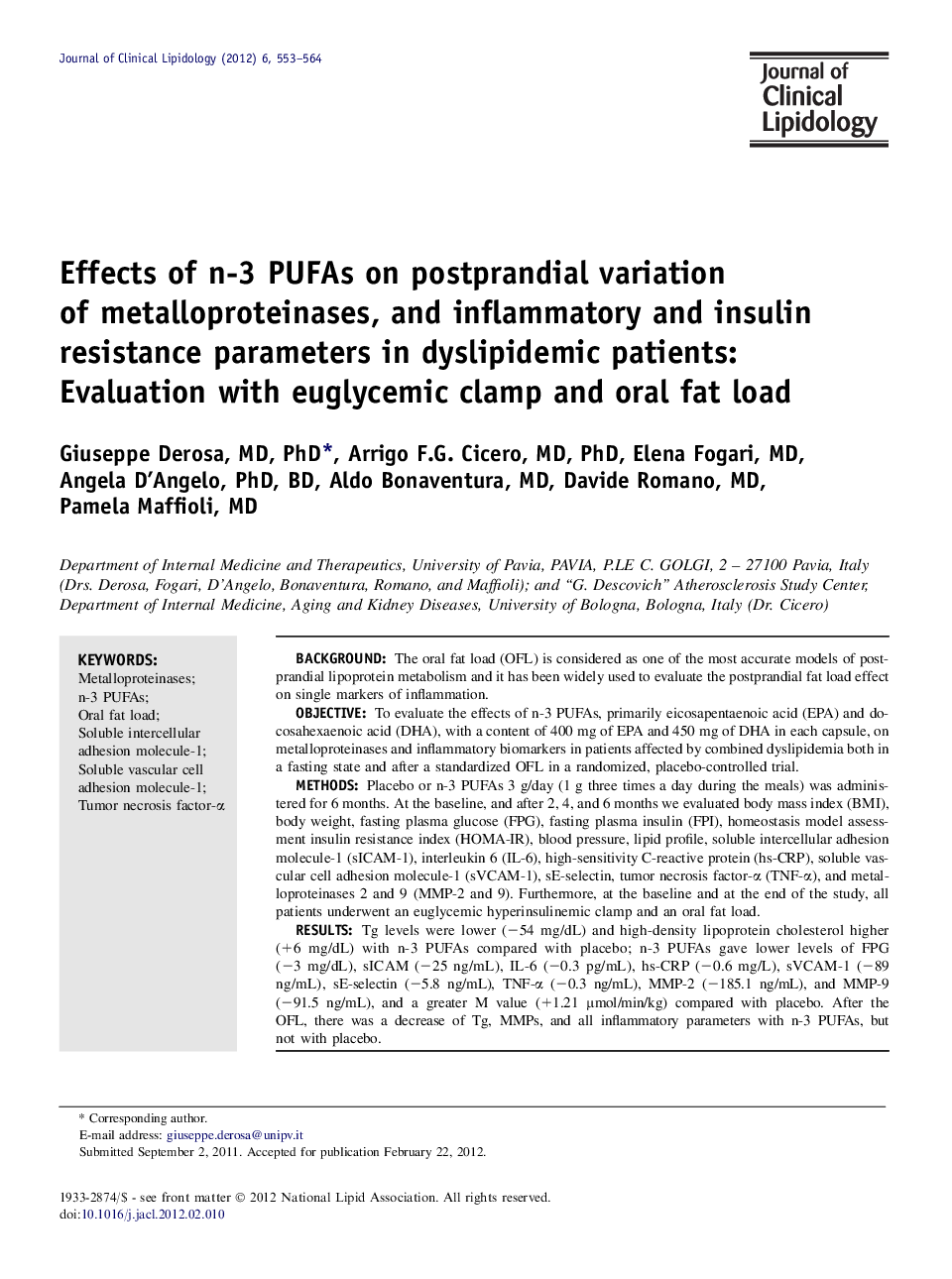| Article ID | Journal | Published Year | Pages | File Type |
|---|---|---|---|---|
| 2966245 | Journal of Clinical Lipidology | 2012 | 12 Pages |
BackgroundThe oral fat load (OFL) is considered as one of the most accurate models of postprandial lipoprotein metabolism and it has been widely used to evaluate the postprandial fat load effect on single markers of inflammation.ObjectiveTo evaluate the effects of n-3 PUFAs, primarily eicosapentaenoic acid (EPA) and docosahexaenoic acid (DHA), with a content of 400 mg of EPA and 450 mg of DHA in each capsule, on metalloproteinases and inflammatory biomarkers in patients affected by combined dyslipidemia both in a fasting state and after a standardized OFL in a randomized, placebo-controlled trial.MethodsPlacebo or n-3 PUFAs 3 g/day (1 g three times a day during the meals) was administered for 6 months. At the baseline, and after 2, 4, and 6 months we evaluated body mass index (BMI), body weight, fasting plasma glucose (FPG), fasting plasma insulin (FPI), homeostasis model assessment insulin resistance index (HOMA-IR), blood pressure, lipid profile, soluble intercellular adhesion molecule-1 (sICAM-1), interleukin 6 (IL-6), high-sensitivity C-reactive protein (hs-CRP), soluble vascular cell adhesion molecule-1 (sVCAM-1), sE-selectin, tumor necrosis factor-α (TNF-α), and metalloproteinases 2 and 9 (MMP-2 and 9). Furthermore, at the baseline and at the end of the study, all patients underwent an euglycemic hyperinsulinemic clamp and an oral fat load.ResultsTg levels were lower (−54 mg/dL) and high-density lipoprotein cholesterol higher (+6 mg/dL) with n-3 PUFAs compared with placebo; n-3 PUFAs gave lower levels of FPG (−3 mg/dL), sICAM (−25 ng/mL), IL-6 (−0.3 pg/mL), hs-CRP (−0.6 mg/L), sVCAM-1 (−89 ng/mL), sE-selectin (−5.8 ng/mL), TNF-α (−0.3 ng/mL), MMP-2 (−185.1 ng/mL), and MMP-9 (−91.5 ng/mL), and a greater M value (+1.21 μmol/min/kg) compared with placebo. After the OFL, there was a decrease of Tg, MMPs, and all inflammatory parameters with n-3 PUFAs, but not with placebo.ConclusionSupplementation with n-3 PUFA resulted in lower levels of FPG, plasma lipids, MMPs, and inflammatory parameters and in a better increase of M value compared to placebo, both in the fasting state and after an OFL.
